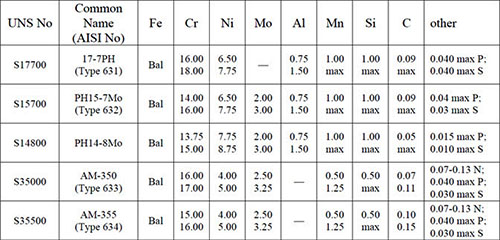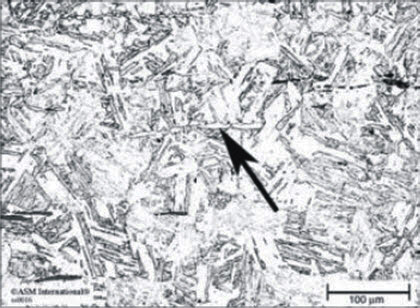Semi-Austenitic Stainless Steels
Abstract
Semi-austenitic stainless steels are just one of three groups of materials which are precipitation hardened steels, the others being martensitic and austenitic.
Some key characteristics of semi-austenitic stainless steels are high strengths, as well as high toughness, and corrosion resistance along with less favorable traits such as low fracture toughness in high strength conditions and low (subzero) temperatures.
The semi-austenitic stainless steels are precipitation-strengthened alloys that can be heat treated to a range of mechanical properties. These alloys are used for their combination of high strength, high toughness, and corrosion resistance. Alloy 17-7PH is commonly used as a spring material to temperatures as a high as 590K. Semi-austenitic stainless steels, however, have low fracture toughness in high strength conditions and a low (subzero) temperature.
Precipitation hardening stainless steels may be divided into three groups: martensitic, austenitic, and semi-austenitic (metastable austenitic).
The semi-austenitic stainless steels are variants of common austenitic stainless steels with additions of alloying elements not generally associated with the austenitic alloys, such as aluminum. Table 1 lists the approximate composition specification ranges for several common semi-austenitic stainless steels.

Table 1: Compositions (wt%) of several common semi austenitic (precipitation-strengthened) stainless steels
Application of precipitation hardening stainless steel
Precipitation hardening stainless steels are developed as material for air and space industry. Today, these steels are available in a wide range of products - bars, wires, plates, sheets.
Precipitation hardening stainless steels usually used for:
- mechanical components,
- turbine blades
- nuclear waste casks
Semi-austenitc stainless steel 17-7PH, contains both a martensitic and austenitic microstructure as its chromium-nickel ratio prevents the formation of the fully austenitic phase. This 17-7PH stainless steel was developed to have corrosion resistance as well as significant mechanical strength but principally better stress corrosion resistance.
Figure 1 represents the microstructure of semi-austenitic stainless steel which is:
- solution annealed at 1065°C,
- 955°C hold 10 minutes, air cold,
- -75°C hold 8 hours, air heat to room temperature,
- 510°C hold 60 minutes, air cold.

Figure 1: Microstructure of 17-7 PH steels Villela reagent, x1000
In general, very little data exist for these alloys in gaseous hydrogen; however, the available data indicates that the fracture resistance of semi-austenitic stainless steels is very sensitive to gaseous hydrogen, a characteristic that is common to high-strength alloys. The data from notched tensile tests indicate that this class of alloys has essentially no resistance to fracture in hydrogen environments. Indeed, the semi-austenitic stainless steels appear to be among the families of alloys that are most susceptible to hydrogen assisted fracture. Based on the available data, these alloys are not recommended for stress-bearing components in hydrogen gas.
Precipitation-hardening stainless steels have seen limited use in powder metallurgy despite their high strength. Strengthening of these alloys is achieved by adding elements such as copper and niobium, which form intermetallic precipitates during aging. The precipitation-hardening grades exhibit corrosion resistance levels comparable with those of the chromium-nickel (300 series) grades.
Find Instantly Thousands of Metallography Diagrams!
Total Materia Horizon contains a unique collection of metallography images across a large range of metallic alloys, countries, standards and heat treatments.

Get a FREE test account at Total Materia Horizon and join a community of over 500,000 users from more than 120 countries.